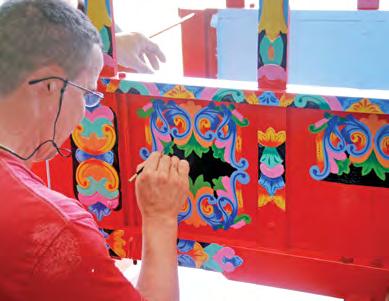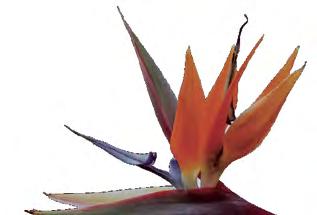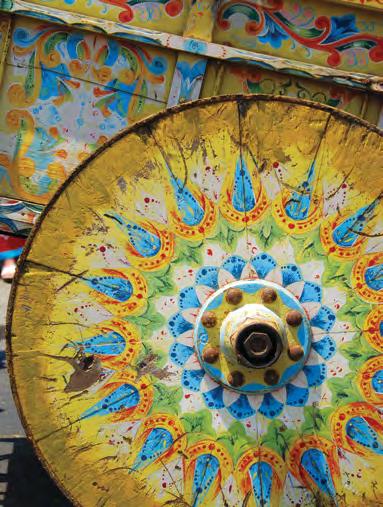
5 minute read
Costa Rica´s Oxcarts

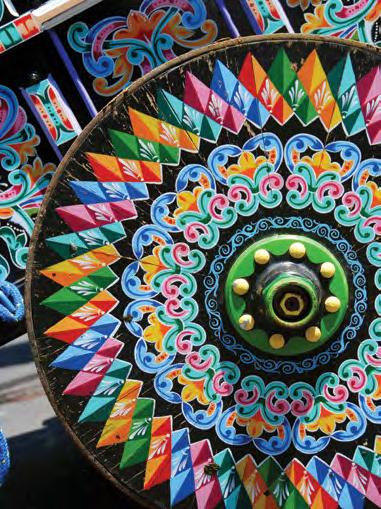
Advertisement

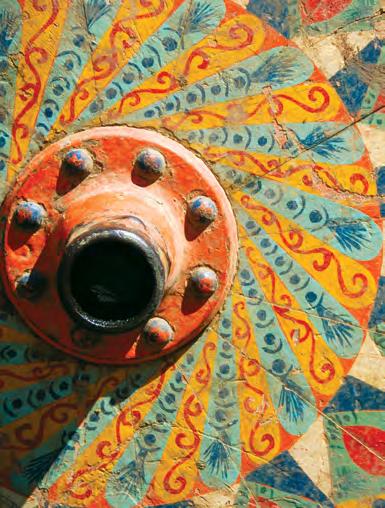
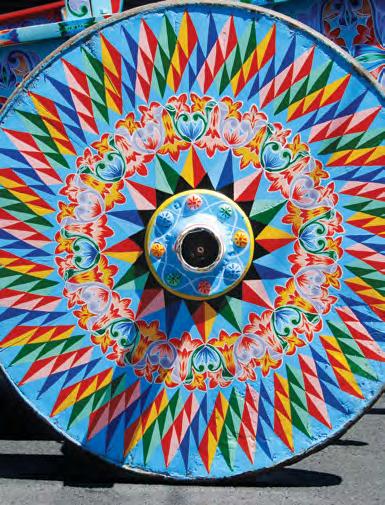


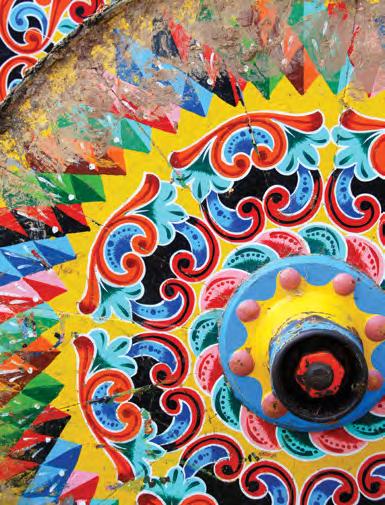
COSTA RICA’S OXCARTS: A World Heritage
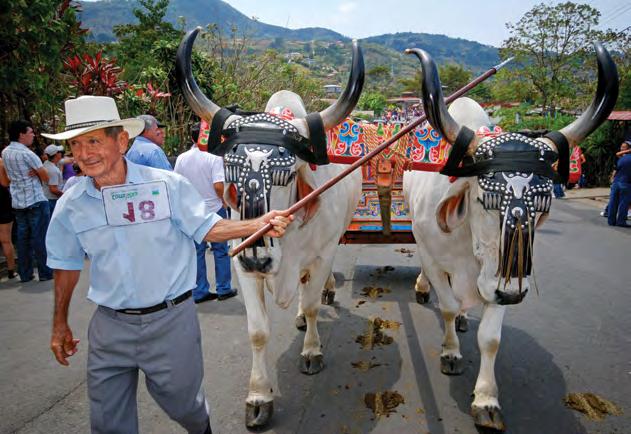
By Aída Araya Photos by Andrés Madrigal
UNESCO, the United Nations Educational, Scientific and Cultural Organization, has proclaimed Costa Rica’s traditional oxcarts an Intangible World Heritage. The colorful oxcart,
its tame and imposing oxen, and the ornate decoration of the yoke and driver make up a local tradition that represents history, culture and national sentiment. “It is not an exaggeration to say that the Republic of Costa Rica was built with the strong tenacity of the oxcart. In each aspect of agricultural labor, the countrymen abided by the strength if their oxen, plowing the earth, hauling harvests and bringing sugar cane to the mills. As a mode of transportation, the oxcart, always pulled by a pair of faithful oxen, took products to market, transported travelers, was an ambulance for the sick and, often, the funeral car for the dead,” wrote Michael Sims in the book La Carreta Pintada (The Painted Oxcart). Spanish colonizers brought the oxcart to Costa Rica both as a mode of transportation and as a work implement. Throughout its use, it has experienced adaptations due to our topography, climate and local ingenuity. For example, the wheels used to be made of metal or wood spokes which would get jammed with sticks and stones in the road. The wheels would break. The
Ticos changed this. First, they used a solid piece of wood that would slowly wear out. Then, they used a three-piece system that was reinforced by small slats of wood. This also would break on our rudimentary roads. Finally a more efficient method was invented: using sixteen pieces of wood within a metal band that enclosed the wood. This last model is a Costa Rican invention that is still used today. Another element that was inspired in Costa Rica, and which has received international attention, is the ornate decoration of the oxcart. In the beginning, the carts were not painted. Our ancestors, perhaps inspired by the need to protect the wood or engaged in their tropical surroundings, started this custom. Most researchers agree with this thesis, including the graphic designer Lidilia Arias in her book Las Carretas Decoradas (Decorated Oxcarts): “The visual aesthetic that the countrymen from that era developed could have been based in the admiration of the vegetation, landscapes and architectural elements found on churches and imagery. The oxcarts’ decorations offered purely tropical colors with borders that resemble tendrils and drawings that interweave like wild tropical grass.” Although the use of the oxcart has largely been replaced by trains and cargo-hauling vehicles, it is still used as a means of transportation and work, even in areas near the capital. You can often see them in San Antonio de Escazú, San Jerónimo de Moravia and Coronado, directed by a man in a canvas hat and work boots, moving the giant oxen forward, pulling a colorful cart full of firewood or hay, oftentimes with one of his small children sitting in the back, helping with the day’s labor and learning the technique to control the oxen first hand.
Details on the Oxcarts
Every year, on the second Sunday in November, Costa Rican tradition calls together oxcart drivers from around the country. They file into the capital for a colorful oxcart parade along Paseo Colón. Each community has its celebration of its patron saint (at least one community has its fiesta each month). These fiestas are a chance for the community to admire the trio of oxen, cart and driver. The community of Sarchí, in Alajuela, continues to paint oxcarts in their traditional style, which has become a synonym of Costa Rican artistic expression. In recent years, Costa Rica’s oxcarts have taken a more commercial turn in representing our famous flora and fauna, including toucans, parrots and monkeys. Many artisans and researchers have spoken out against this trend, considering that it cheapens traditional oxcart-painting techniques by adding elements that are only for profit. The oxcart driver has developed a special language to direct his oxen. In addition to using his prod, terms like “gui” (pronounced “wee”) make the oxen go forward, and “jesa” (HAYsah) make them stop. Many popular sayings involve the oxcart, too. Some of the more common ones are “he got on the oxcart” (se montó en la carreta) and “the lighter the oxcart, the noisier it is” (entre menos pesa la carreta, más suena). The first saying refers to the custom of the oxcart driver, after trying to numb the effects of a long journey with ample alcohol, climbed into the back of the oxcart to sleep off the booze, leaving the oxen, who knew the route, to take him home. This action was penalized by the Oxcart Police at the time with a one-peso fine, and the official charge on the ticket would read: He got on the oxcart. The second expression refers to people who talk and talk without saying anything of importance. While this was once directed at our countrymen, today it would be a more accurate description of politicians.


